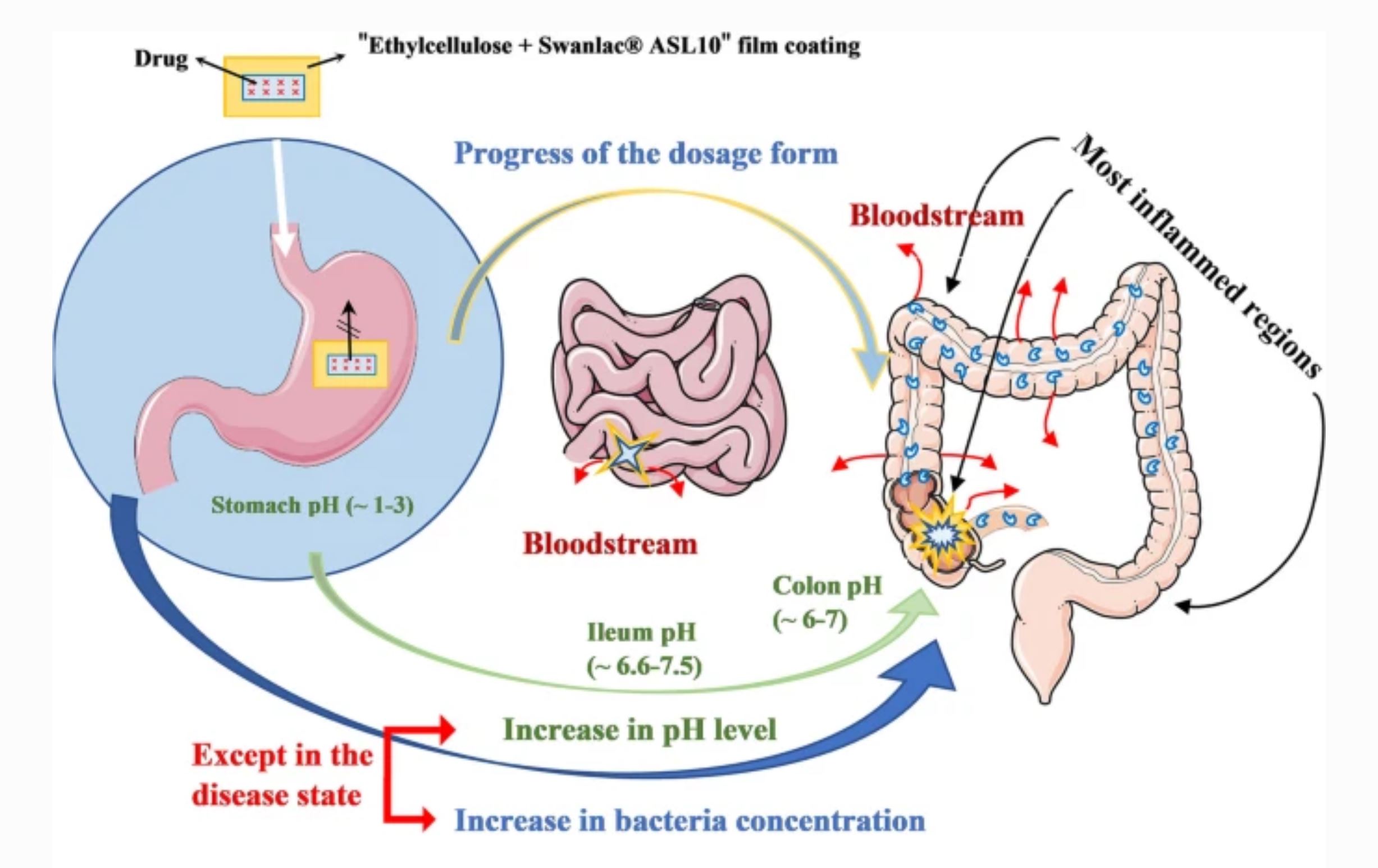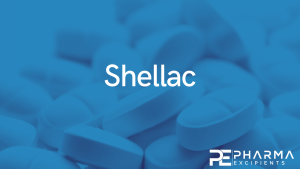Film Coatings Based on Aqueous Shellac Ammonium Salt “Swanlac® ASL 10” and Inulin for Colon Targeting

Over the past decades, increasing interests took place in the realm of drug delivery systems. Beyond treating intestinal diseases such as inflammatory bowel disease, colon targeting can provide possible applications for oral administration of proteins as well as vaccines due to the lower enzymatic activity in the distal part of GIT. To date, many strategies are employed to reach the colon. This article encompasses different biomaterials tested as film coatings and highlights appropriate formulations for colonic drug delivery. A comparison of different films was made to display the most interesting drug release profiles. These films contained ethylcellulose, as a thermoplastic polymer, blended with an aqueous shellac ammonium salt solution.
Different blend ratios were selected as well for thin films as for coated mini-tablets, mainly varying as follows: (80:20); (75:25); (60:40). The impact of blend ratio and coating level was examined as well as the addition of natural polysaccharide “inulin” to target the colon. In vitro drug release was measured in 0.1 M HCl for 2 h followed by phosphate buffer saline pH 6.8 to simulate gastric and intestinal fluids, respectively. Coated mini-tablets were exposed to fresh fecal samples of humans in order to simulate roughly colonic content. Several formulations were able to fully protect theophylline as a model drug up to 8 h in the upper GIT, but allowing for prolonged release kinetics in the colon. These very interesting colonic release profiles were related to the amount of the natural polysaccharide added into the system.
Read more here
Strich, S., Azehaf, H., Neut, C. et al. Film Coatings Based on Aqueous Shellac Ammonium Salt “Swanlac® ASL 10” and Inulin for Colon Targeting. AAPS PharmSciTech 24, 205 (2023). https://doi.org/10.1208/s12249-023-02652-2
Read more on Introduction of Shellac as a pharmaceutical excipient here:


